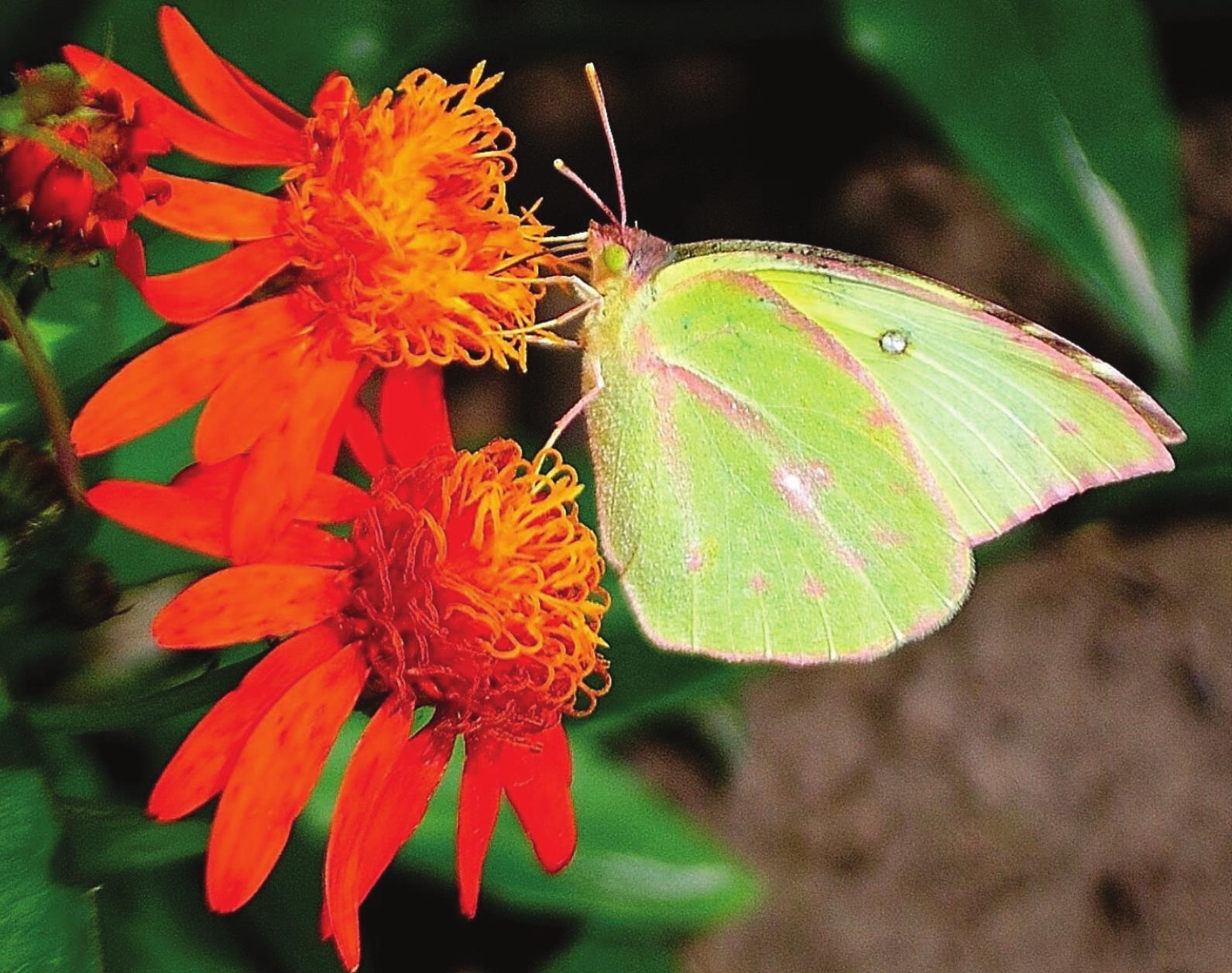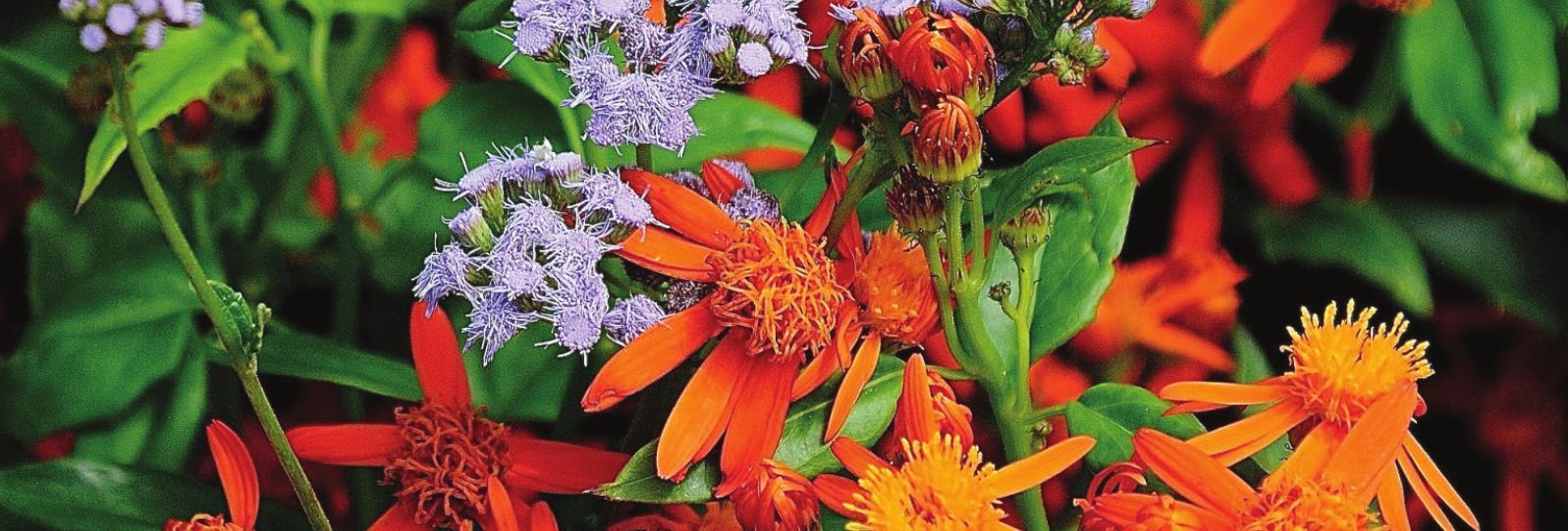

Above, a queen feeding on Mexican Flame Vine. Below, consider partnering Flame Vine with purple flowers for the maximum depth of color. Photos by Norman Winter
The Garden Guy
When you hear names like Mexican Flame or Orange Glow, their titles do a good job in telling you this is a bold flower riveting in color. Considering it is a vine that attracts hummingbirds and butterflies and packs a fiery orange, it’s no wonder it’s an awardwinning plant.
To be honest, I think everyone should grow it, if for no other reason than its botanical name Pseudogynoxys Chenopodioides. Can you imagine what your neighbors would think when they ask, ‘What's that gorgeous vine you are growing?’ Then you tell them the botanical name.
The Mexican Flame vine is a woody tropical vine. Most references say it is cold hardy in zones 9 and higher, but I have seen many doing just fine in zone 8. Like the name suggests, the Mexican Flame vine is native to Mexico and is not that picky on soil. I've grown it in acid soil conditions fit for azaleas, and soils more reminiscent of the desert. It is in the aster or daisy family, in which you will quickly notice the similarities.
Though we are in mid-September here in the Central Texas area, you may find some good buys on these plants. If not, then make plans to locate your source for spring planting in April. When you get yours, dig your hole about as twice as wide as the root ball. Plant at the same depth they are growing in the container. Plant the vine next to a structure of support for climbing like a trellis, arbor or pergola. It is a compact vine that will only reach about 10 feet tall, and is drought tolerant once established. You will need to do a little training to get it climbing. You'll also like that it is not a plant hammered by pests.
The vine is great about re-blooming, and if you need to do a little cutting back, it will quickly send out more growth and another round of blooms. The blazing orange just screams to be planted in partnership with complementary blue flowers. My first choice would be to use blue salvias like Victoria Blue or Mystic Spires Blue. If you're bold and want a native, then consider the late summer blooming hardy ageratum, known botanically as Conoclinium Coelstinum, or Gregg’s Mistflower Conoclinium Greggii.
Once you start growing yours, you will notice all sorts of butterflies like to feast on the nectar rich blossoms. Red-admirals, fritillaries, monarchs, and cloudless sulphurs will all visit on a regular basis. You will also notice that these blooms are frequented by hummingbirds as well.
Vines play an important role in the landscape giving a vertical dimension. It is sort of like hanging a mirror or picture on the wall indoors. The Mexican Flame Vine was a champion for butterflies when I was at the National Butterfly Center in Mission, and it will be one of the most dazzling additions to your garden.
Follow me on Facebook @ NormanWinterTheGardenGuy for more photos and inspiration.











